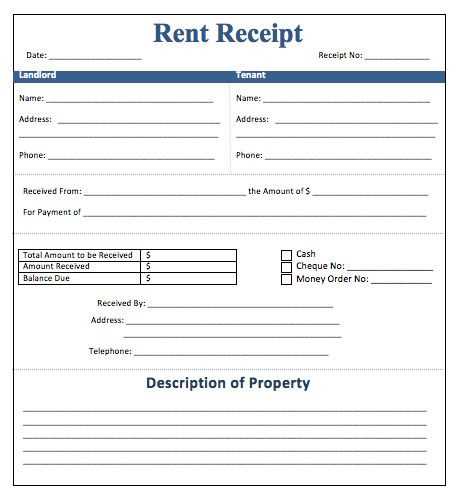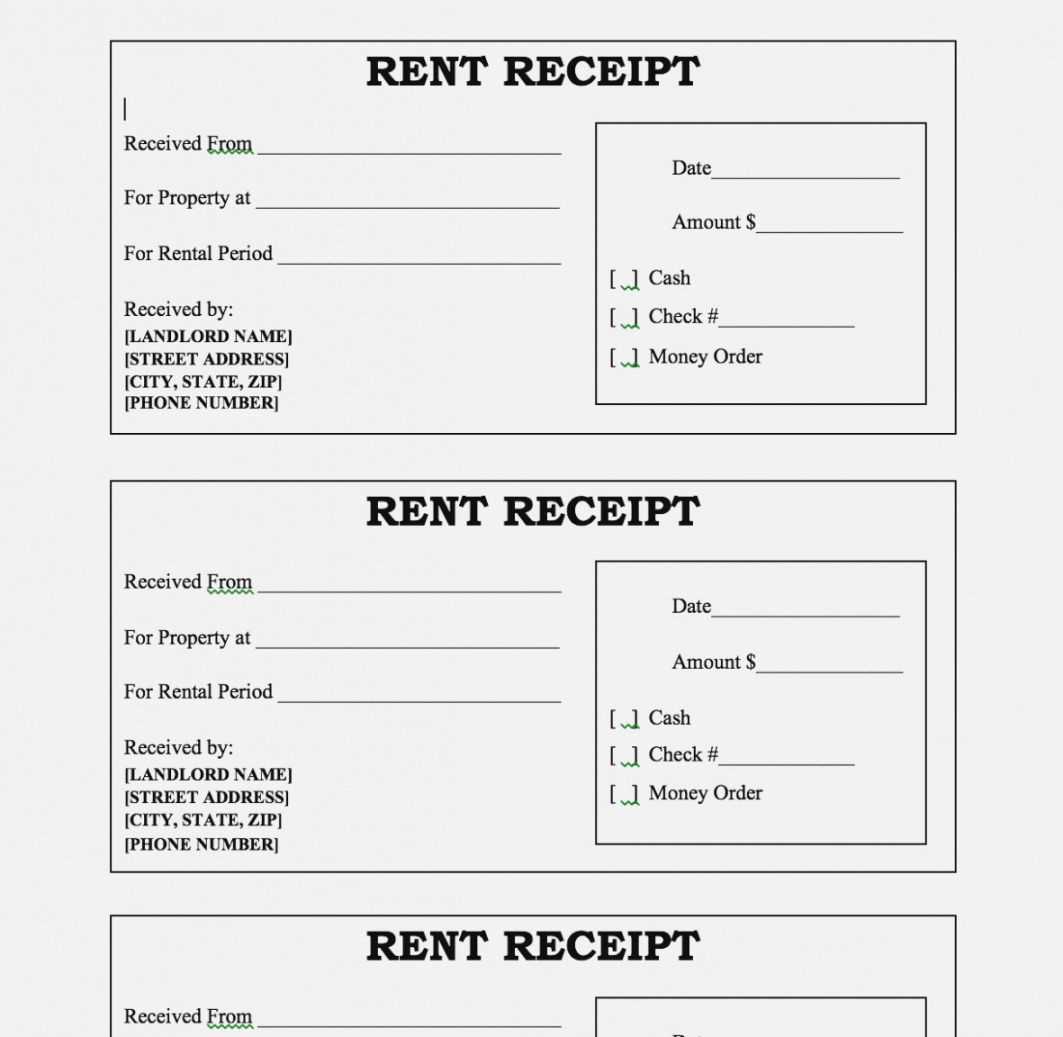
For landlords and tenants, having a clear and detailed rent receipt is key for keeping track of payments. A rent receipt serves as proof of payment and provides both parties with a record for future reference. To create a copy of a rent receipt template, follow these straightforward steps.
The first step is to ensure that all necessary information is included. A typical rent receipt should list the tenant’s name, rental property address, the amount paid, the payment method, the date of payment, and the rental period covered. This information is crucial for both legal and organizational purposes.
Next, be sure to provide a receipt number. This unique identifier helps organize records, making it easier to reference past transactions. If you are renting out multiple properties, this number also helps distinguish receipts from one another.
Once the essential details are in place, consider offering space for both the landlord’s and tenant’s signatures. While not always required, signatures can help further confirm that the payment was agreed upon by both parties.
For easy access, store the receipt copy electronically or in a well-organized filing system. You can also create an editable template for consistent use, which helps streamline the process for future payments.
Here is the corrected version:
To ensure the receipt template meets legal requirements, follow these steps:
- Include the full name and address of the landlord.
- Specify the tenant’s full name and rental property address.
- List the amount paid, payment method, and the rental period covered.
- State the date the payment was received and the date the receipt was issued.
- Provide any additional notes, such as late fees or deductions, if applicable.
Double-check the formatting to ensure it’s clear and easy to read. It’s a good practice to include a reference number for easier tracking.
- Detailed Guide on Rent Receipt Template Copy
A rent receipt template should clearly outline the tenant’s payment details and any other necessary information to confirm a transaction. Ensure that it includes the following elements:
Key Elements

The receipt should have the tenant’s name, property address, payment date, amount, and method of payment. Be sure to also include the landlord’s name and contact information. For added clarity, you can also note the rental period the payment covers.
Structure and Layout
Use a clean and organized format. The title “Rent Receipt” should be placed at the top. Below that, list the landlord and tenant details, followed by payment information. Separate sections for the rental period and amount paid will keep everything easy to read. Avoid cluttering the receipt with unnecessary elements, and keep it straightforward.
Including a receipt number or unique identifier is recommended for record-keeping purposes. This helps both the tenant and landlord track payments more efficiently.
Finally, ensure the language used is simple and precise. This way, the tenant can quickly verify that all payment details are accurate without any confusion.
A rent receipt should include clear and accurate details to avoid confusion for both the landlord and tenant. First, include the tenant’s name, the property address, and the landlord’s contact information. These help confirm the identity of the involved parties and the location of the rental property.
Payment Information

Clearly state the amount of rent paid, the payment date, and the payment method used. This creates a transparent record for both parties, ensuring there is no misunderstanding about the payment status.
Other Relevant Details

If applicable, include any additional charges, such as utilities or maintenance fees, to clarify what is being covered in the payment. Finally, include a receipt number or a reference to track the transaction, enhancing the documentation process.
Adjust the template by adding your business name, address, and contact details at the top. This makes it clear who issued the receipt and provides easy access for future communication.
Modify the payment section to include specific details like rent amount, payment date, and method of payment. For example, if payment was made via bank transfer, include the transaction number for reference.
Add fields for both tenant and landlord signatures. This confirms the authenticity of the transaction. You can also include a field for any discounts or late fees, making the document more tailored to the specific agreement.
If your rent includes utilities, break down the individual costs for transparency. This can prevent confusion and ensure both parties understand exactly what is being paid for.
Consider adding a space for notes. This could be used to clarify specific terms or additional agreements that are part of the rental arrangement, such as agreed-upon repairs or inspections.
Finally, ensure that the template reflects the local legal requirements by adding any mandatory disclaimers or tax information, making the receipt both professional and compliant.
When preparing a rent receipt, ensure the document includes accurate details to avoid future disputes. The receipt should list the landlord’s and tenant’s names, rental period, payment amount, and the date of transaction. By keeping these records clear, both parties can avoid misunderstandings regarding payment history.
Ensure the template complies with local regulations. In many jurisdictions, rent receipts must be issued upon request and serve as proof of payment for tenants. Failure to provide proper documentation could lead to legal complications, especially if the tenant needs it for tax purposes or to settle disputes in small claims court.
Avoid ambiguity in the receipt. Clearly state whether the payment is for rent, utilities, or other services, as this can impact financial or tax-related matters. Also, maintain a record of all receipts issued, as repeated payments may require verification during disputes or audits.
If you’re using a digital template, check that the file is easily accessible and secure. Digital receipts can be legally binding if they meet the necessary criteria for authenticity and clarity, but make sure they can be accessed or printed by both parties if needed in the future.
List of Key Information in Rent Receipt

Ensure you include the tenant’s full name and address, along with the landlord’s details. Mention the rental period (start and end dates), and clearly state the amount paid. Provide a breakdown of the payment method, whether it’s cash, check, or bank transfer. Make sure to specify the property’s address, along with any other relevant identifiers such as apartment number or unit. Include the payment due date and the receipt date to establish clarity.
Do not forget to add: A unique receipt number for reference, indicating the payment’s specific identification. This helps both parties track the transaction without confusion. If applicable, mention any deductions or adjustments made in the payment amount.
Lastly, include a statement confirming the payment was received in full for the specified period. This ensures there are no misunderstandings and provides both parties with peace of mind.


